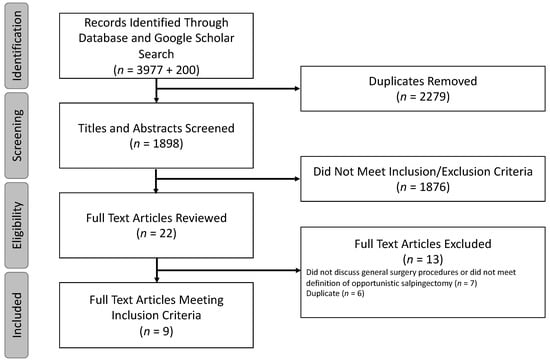– A craniotomy is a surgical procedure that involves removing part of the skull bone to access the brain.
– Specialized tools are used to remove the bone flap, which is temporarily replaced after the brain surgery.
– Some craniotomy procedures use computer imaging (MRI or CT scans) to guide the surgery to the specific location in the brain.
– This technique is called stereotactic craniotomy and provides a three-dimensional image of the brain, useful for distinguishing tumor tissue from healthy tissue.
– Other uses of stereotactic craniotomy include biopsy, aspiration, and radiosurgery.
– Endoscopic craniotomy involves inserting a lighted scope with a camera into the brain through a small incision in the skull.
– Aneurysm clipping is a surgical procedure that may require a craniotomy to isolate and prevent the rupture of a bulging weakened area in an artery in the brain.
– Craniectomy is a similar procedure where a portion of the skull is permanently removed or replaced later.
– Other related procedures for diagnosing brain disorders include cerebral arteriogram, CT scan, EEG, MRI, PET scan, and X-rays of the skull.
– Johns Hopkins neurosurgeons are skilled in all types of craniotomy and offer less invasive options for brain tumor surgery, aneurysm surgery, and skull deformity repair after brain surgery.
– The extended bifrontal craniotomy involves removing bone from the front of the brain to safely access and remove tumors.
– The supra-orbital ??eyebrow?? craniotomy is a minimally invasive procedure that involves making a small incision within the eyebrow to access tumors in the front of the brain or around the pituitary gland.
– The retro-sigmoid ??keyhole?? craniotomy is also minimally invasive and involves removing tumors through an incision behind the ear, providing access to the cerebellum and brainstem.
– The orbitozygomatic craniotomy is a traditional approach that involves removing bone from the orbit and cheek to reach difficult tumors and aneurysms.
– The translabyrinthine craniotomy involves making an incision behind the ear to access tumors.
– Before the procedure, patients may need to fast and inform healthcare providers of any allergies or sensitivities to medications, latex, tape, and anesthetic agents.
– Patients should also disclose all medications, including over-the-counter drugs and herbal supplements, as well as any history of bleeding disorders or the use of anticoagulant medications.
– Smoking should be stopped before the procedure to improve chances of successful recovery and overall health.
– Patients may be required to wash their hair with a special antiseptic shampoo the night before surgery.
– Sedatives may be administered to help patients relax before the procedure.
– The length of hospital stay for a craniotomy is usually 3 to 7 days, followed by possible rehabilitation.
– The specific procedures during a craniotomy may vary depending on the patient’s condition and the doctor’s practices.
– The patient will have to remove clothing, jewelry, and other objects that may interfere with the procedure and wear a gown.
– An intravenous (IV) line and urinary catheter will be inserted.
– Patients will be positioned on the operating table to provide the best access to the affected area of the brain.
– The anesthesiologist will monitor heart rate, blood pressure, breathing, and blood oxygen levels throughout the surgery.
– The scalp over the surgical site will be cleansed with an antiseptic solution.
– Different incision types may be used depending on the location of the affected brain area. Endoscopes may be used to make smaller incisions.
– A device may be used to hold the head in place, which will be removed at the end of the surgery.
– The scalp will be pulled up and clipped to control bleeding and provide access to the brain.
– A medical drill may be used to create burr holes in the skull, and a special saw may be used to carefully cut the bone.
– The bone flap will be removed and saved.
– The dura mater, the outer covering of the brain, will be separated from the bone and carefully cut.
– After the surgery, the layers of tissue are sewn together and the bone flap is reattached. If a tumor or infection is found, the bone flap may not be replaced.
– Recovery time after brain tumour surgery varies for each individual
– Hospital stay after surgery can be between 3 to 10 days
– Risks after surgery include infection, blood clots, breathing problems, bleeding, and wound problems
– Immediate side effects of brain surgery can include swelling in the brain (oedema)
– Swelling can result in symptoms such as headaches, weakness, dizzy spells, poor balance, personality or behaviour changes, confusion, speech problems, seizures, and blurred vision
– Steroids may be given to reduce swelling and pressure around the brain
– Medication to prevent seizures may also be prescribed
– After brain surgery, it may be difficult to return to work immediately, especially in jobs that require mental skills or involve operating heavy machinery.
– Alcohol consumption may have a greater effect after brain surgery, and certain medicines may require avoiding alcohol.
– There are no medical reasons to avoid sexual activities after brain surgery, but individuals may experience less interest in sex due to tiredness or changes in libido.
– The healthcare team is available to help with any concerns related to sexual problems after brain surgery.
Continue Reading



